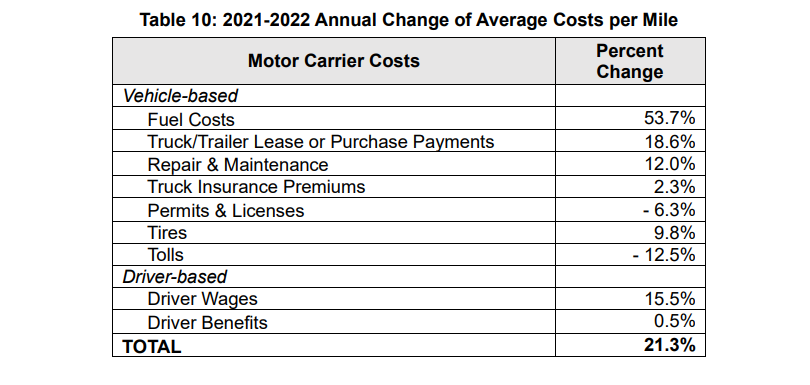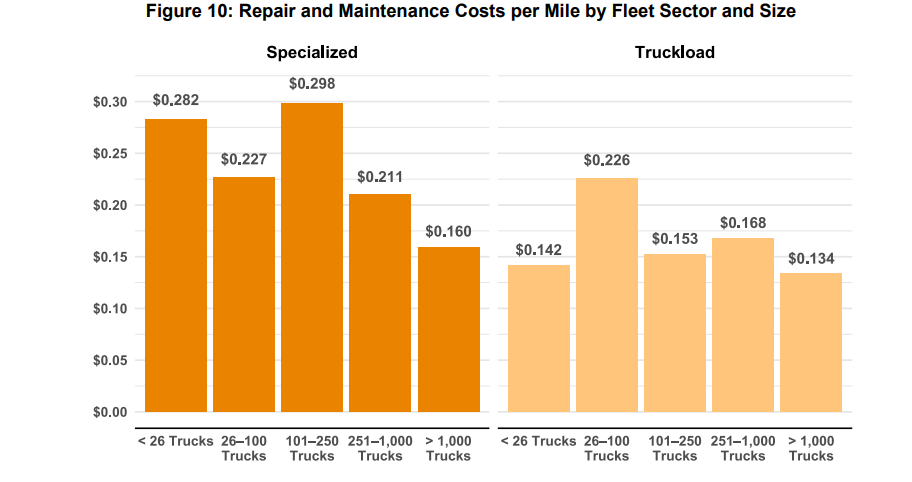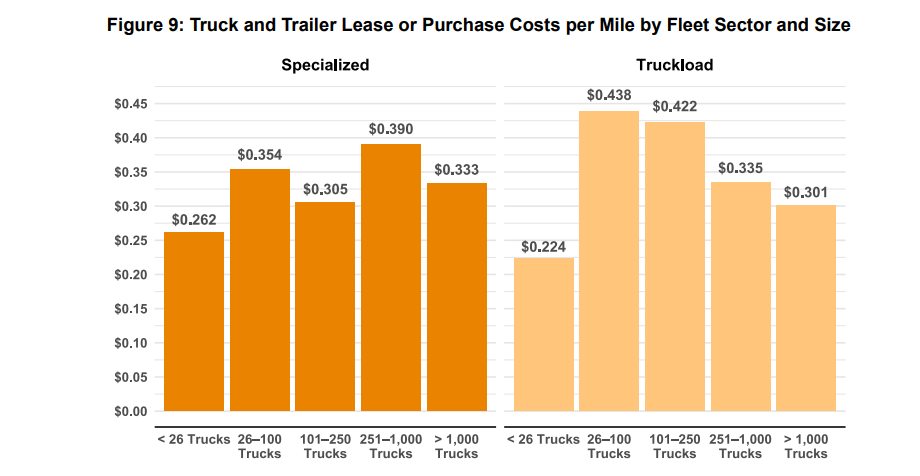Trucking costs hit record in 2022: ATRI
Last year it cost more than an average $90 per hour to operate a truck, breaking the 2021 record as the most expensive year in trucking, the American Transportation Research Institute (ATRI) says.
Total marginal costs identified in ATRI’s updated Analysis of the Operational Costs of Trucking survey spiked to US$2.251 per mile – a 21.3% increase over 2021 with fuel costs included. Without fuel, the increase was 12%. However, driver wages, truck payments and maintenance costs also rose sharply last year, driving a strong increase in total marginal costs.
Despite the rising costs, fleets managed to improve some operational factors such as driver turnover and equipment utilization, ATRI says in the report.

While fuel costs have been increasing in recent years, they spiked in February following Russia’s invasion of Ukraine, causing related costs to increase almost 54%. However, in May 2023 the average weekly price for diesel dropped below $4 a gallon for the first time since February 2022, signifying the current return to pre-invasion prices. (All figures in US dollars.)
Driver compensation
The trucking industry’s attempts to retain and hire drivers are reflected in the 12.3% increase in total driver compensation. Driver wages grew over 15%, and ATRI says this is the fastest pace it has observed to date.
On average, carriers spent more than 90 cents per mile on driver pay and benefits combined. But while larger fleets increased company driver wages more than the smaller fleets, the smaller fleets (with 100 or fewer power units) still spent 7.7 cents more per mile than larger carriers.
Owner-operators’ pay was also increased to an average of $2.08 per mile last year, which was a new record high.
Unlike 2021, the average truckload fleet’s driver benefits costs and pay increased in 2022, as did fleet size. But this tendency was even stronger for specialized carriers’ drivers.
Truck driver pay differences
“The size of this pay differential is partly because many small fleets in this sector had more highly specialized operations, which often included supplemental pay or bonuses – such as load-specific oversize or loading pay – that larger fleets were less likely to offer,” ATRI explains in the report.
The gap between LTL driver wages and truckload driver wages decreased in 2022. LTL carriers paid an average of 78 cents per mile in driver wages – up almost eight cents since last year.
The average driver benefit cost was 28 cents per mile for LTL carriers, exceeding any other fleet sector. The benefit costs have also increased in specialized and truckload sectors – suggesting fleets are willing to manage long-term financial commitments, ATRI suggests.

Equipment payments and maintenance
Despite the abnormal market conditions that posed unique challenges for acquiring and maintaining equipment in 2022, many carriers were willing to replace aging equipment and improve efficiency. For example, the average truck age decreased by one year since 2021, down to 4.7 years.
But that came at a cost of an 18.6% spike in truck and trailer payments, which became the greatest annual change in that cost center since 2014. The costs went up to $0.331 per mile.
Those who acquired trucks in the first half of 2022 had to pay a premium because of the limited supply. Many other carriers bought large volumes of trucks in the second part of 2022 when supply was improving. However, such a demand affected the further increase of truck prices, ATRI explains.
Truck repair and maintenance also increased by 12%, making up the industry average of $0.196. This increase is lower than in 2021 due to carriers’ continuous efforts to replace aging equipment.

In 2023, the total amount spent on trucks, trailers and their maintenance will depend on two factors – the need to continue replacing old equipment and broader macroeconomic trends that will shape the soft freight market, ATRI says.
“The bearish economy in 2023 will create considerable uncertainty for carriers, who will need to carefully monitor and prioritize costs in order to maintain financial stability. Despite an adverse economic climate, the trucking industry has made strides over the previous two years – in newer equipment, more competitive driver compensation, and improved operations – that put it in a good position to meet these challenges,” it concludes.
Have your say
This is a moderated forum. Comments will no longer be published unless they are accompanied by a first and last name and a verifiable email address. (Today's Trucking will not publish or share the email address.) Profane language and content deemed to be libelous, racist, or threatening in nature will not be published under any circumstances.